#turin and beleg
Text

Turin mourning Beleg's death
Pose inspired by an intense mourning scene in "The Untamed"

#my artwork#the silmarillion#turin turambar#beleg cuthalion#crossover#beleg strongbow#turin and beleg#sad#death#the untamed#tolkien#black and white
13 notes
·
View notes
Text
The Children of Hurin
aka The Curse of Turin
#silmarillion#the silmarillion#fingolfin#feanor#beleg strongbow#beleg x turin#turin#turin turambar#narn i chin hurin#silm fic#silm au#silm incorrect quotes#silmart#silm shitpost#feanor meme#saeros#fuck you saeros#beleg cuthalion#turin and beleg
49 notes
·
View notes
Text



The Death of Beleg
Me and @chechula were listening to The Children of Húrin read by Christopher Lee. His dramatic voice fits perfectly 🐲💖
#my art#ink#illustration#traditional art#tolkien#silmarillion#english literature#beleg cuthalion#turin turambar#children of hurin#tw blood
1K notes
·
View notes
Text
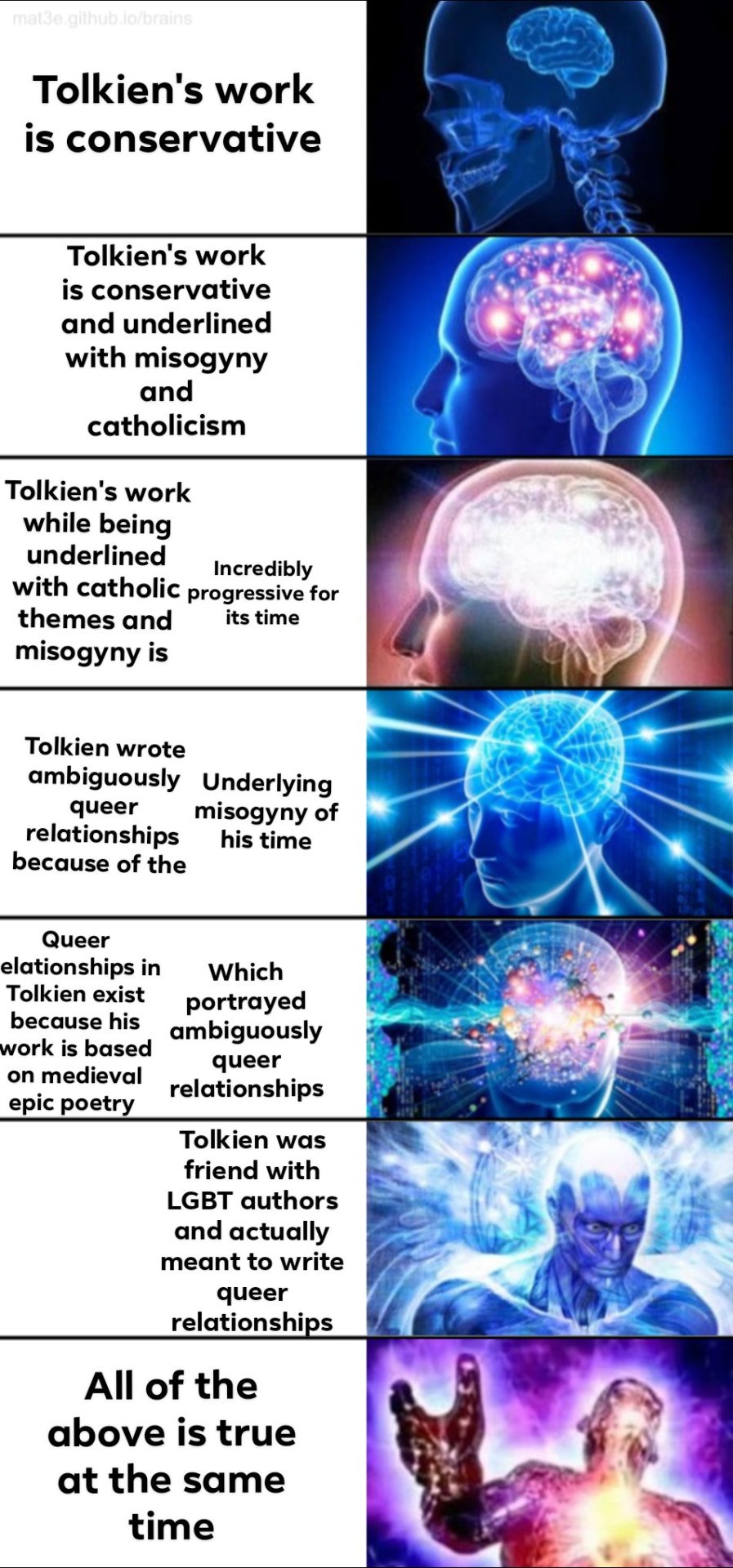
#tolkien#beleg strongbow#turin turambar#fingon#maedhros#samwise gamgee#frodo baggins#bilbo baggins#thorin x bilbo#legolas#legolas x gimli#gimli#glorfindel#ecthelion
13K notes
·
View notes
Photo
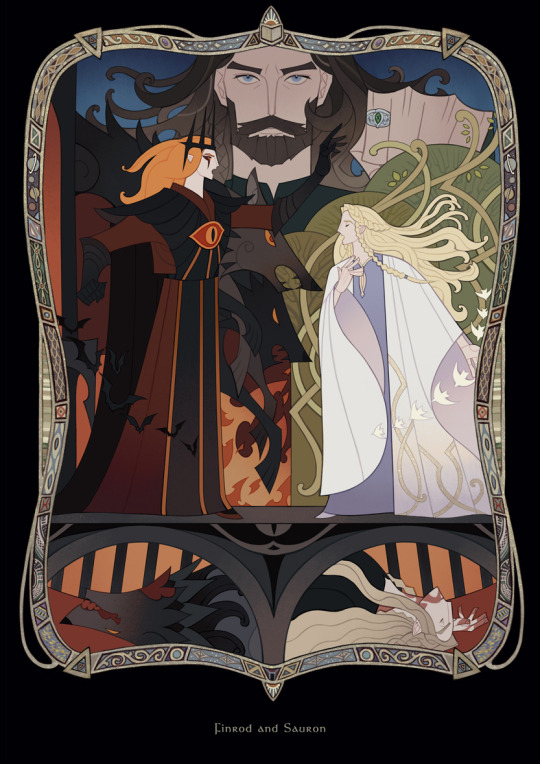



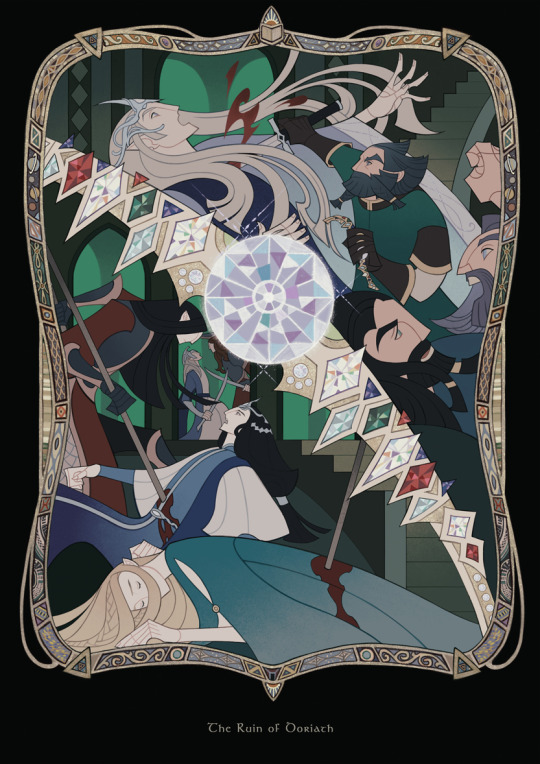

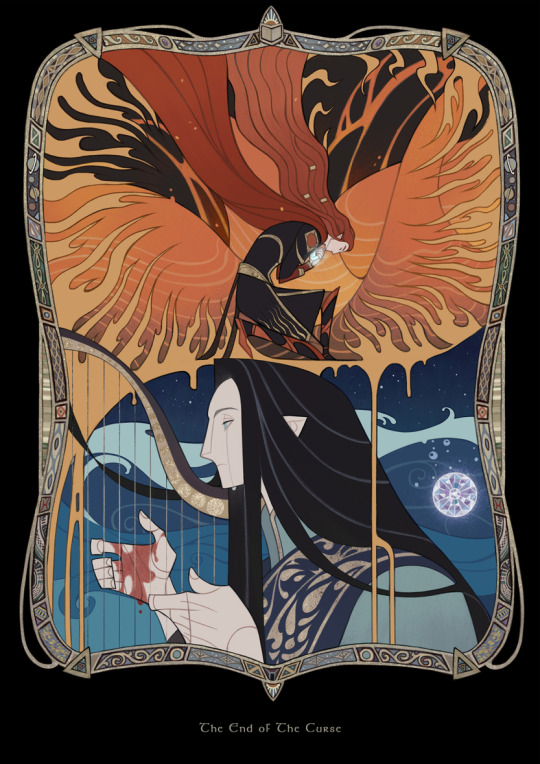



Finrod and Sauron
Battle of Unnumbered Tears
The Guardians of Gondolin
Túrin Turambar
The Ruin of Doriath
The Voyage of Eärendil
The End of the Curse
Dome and Foam
Three Rings
Bard the Dragon Slayer
Art by Wavesheep. Part I | Part II | Part III.
#art#wavesheep#tolkien#the silmarillion#the hobbit#lotr#finrod felagund#sauron#ainur#beren erchamion#elves#balrog#turgon#turin turambar#morwen#nienor#beleg cuthalion#glaurung#thingol#dwarves#earendil#elwing#maedhros#maglor#elrond#elros#galadriel#celebrimbor#cirdan shipwright#bard the bowman
6K notes
·
View notes
Text


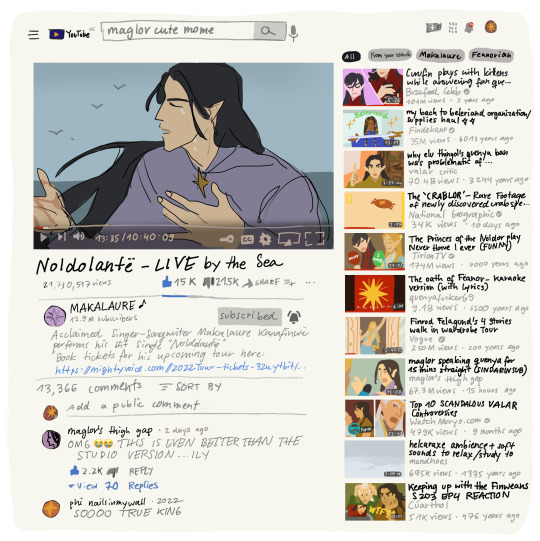
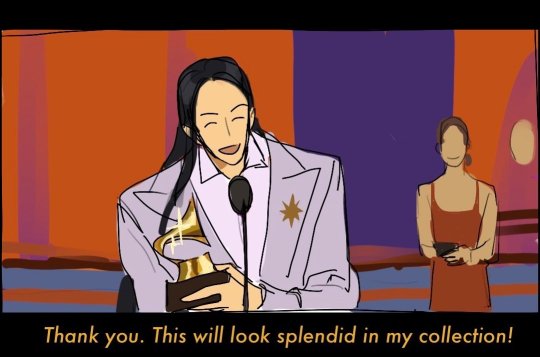
ah yes, maglor's grammy winning record Noldolantë
#oh the youtube elfs series was one of the funniest things ive ever drawn i had so much fun#i have posted these before but i was randomly thinking about them and really wanted to see them all together and make a compilation post#maglor#crablor#silmarillion#noldor#nails silm comix#tolkien#how to tag everyone *SWEATS*#feanor#maedhros#sons of feanor#maglor's thigh gap#finrod#curufin#fingon#turin#ambarussa#beleg#this is one of my magnum opuses
626 notes
·
View notes
Text

Túrinposting
#sorry guys i found this meme like a month ago and immediately thought about them#silmarillion#silm#tolkien#turin#turin turambar#beleg#beleg cuthalion#memes#sketches
710 notes
·
View notes
Photo
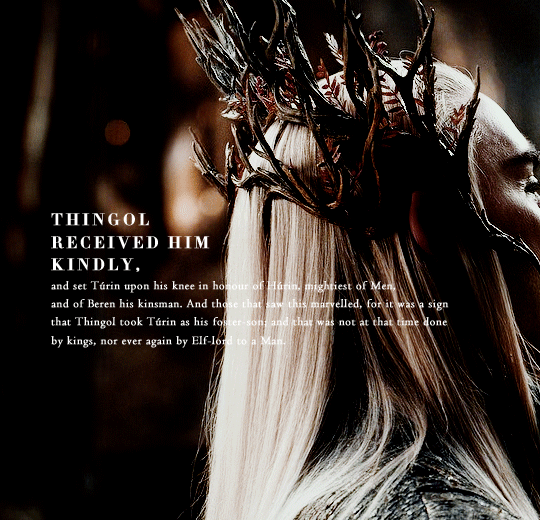

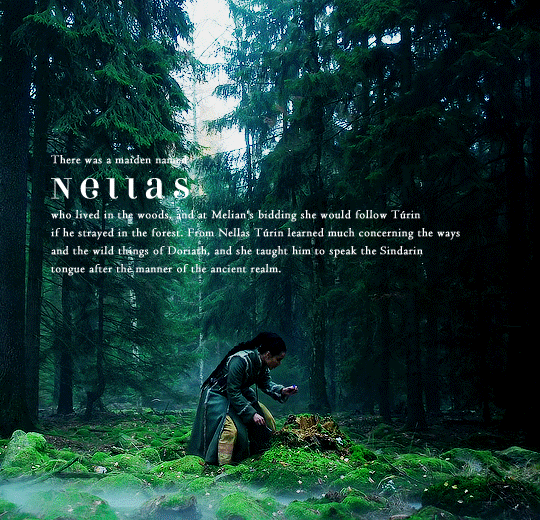

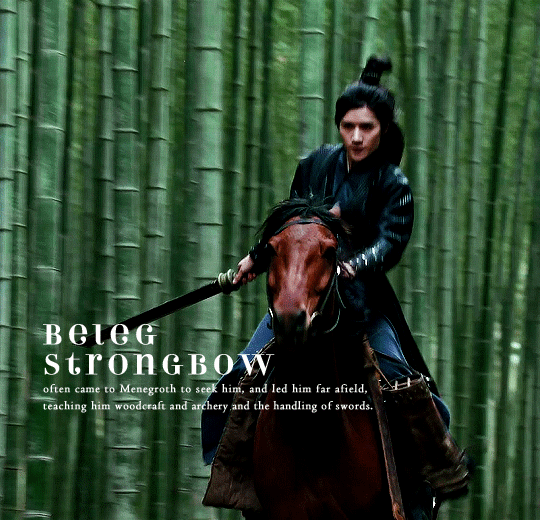

Nine years Túrin dwelt in the halls of Menegroth. His heart and thought turned ever to his own kin, and at times he had tidings of them for his own comfort. For Thingol sent messengers to Morwen as often as he might, and she sent back words for her son; thus Túrin heard that Morwen's plight was eased, and that his sister Niënor grew in beauty, a flower in the grey North. And Túrin grew in stature until he became tall among Men and surpassed that of the Elves of Doriath, and his strength and hardihood were renowned in the realm of Thingol. In those years he learned much lore, hearing eagerly the histories of ancient days and great deeds of old, and he became thoughtful, and sparing in speech.
[He didn´t] win friendship easily, for he was not merry, and laughed seldom, and a shadow lay on his youth. Nonetheless he was held in love and esteem by those who knew him well, and he had honour as the fosterling of the King.
— THE CHILDREN OF HÚRIN, CHAPTER V: TÚRIN IN DORIATH
#silmedit#tolkienedit#cohedit#tolkiensource#túrin#turin turambar#thingol#beleg#nellas#doriath#the children of húrin#silmarillion#tolkien#fancast#mgifs*
409 notes
·
View notes
Text
i love the silm fandom and idc that i’m getting sappy on main. i love that we call maedhros nelyo and maitimo and russandol. i love that we call maglor kano and celegorm tyelko. i love that we affectionately call it silm and not the silmarillion. i love that we write heartwrenching fics and then the cutest, fluffiest oneshots right after. i love scrolling through my dash and seeing the most beautiful fanart known to man because if we don’t have a screen adaptation you better know the artists are gonna make one themselves. i love seeing edits that are literally just animated fanart and phonk music but that are on another plane of reality. i love headcanons. i love fanon. i love the canon. i love that we can all read silm and though we might have different opinions on characters and themes and blorbos we all are united in our overwhelming, indescribable love for it. i love how we all collectively defend maedhros. i love seeing the most unhinged ship tags ever on fics and them being actually really well written. i love that i’ve never read a single badly written silm fic in my life. i love that we can make shitposts about our fav kinslayers and then 2k word essays on the length of turgon’s sword right after. i love russingon. i love beleg and turin. i love how we took material that has such rigid, archaic language and made it our own, brought it to life. idc i love this fandom so much y’all are everything.
#silm#silmarillion#the silmarillion#silm fandom#maedhros#maglor#celegorm#nelyo#kano#tyelko#feanorians#russingon#beleg x turin#lotr#i love yall
605 notes
·
View notes
Text
Yes, there are gay characters in Tolkien’s books
There seems to be an entrenched view among Tolkien fans that Tolkien did not write any gay characters, and that by interpreting any of his characters as gay you are going against what he would have wanted. Homophobes obviously believe this very strongly, and have always been hostile towards queer fans and queer interpretations of Tolkien’s works. Many members of the LGBTQ community also believe that they’re contradicting canon when they interpret Tolkien’s characters as gay—the only difference is they don’t mind doing so.
But is it so against canon to interpret any of Tolkien’s characters as gay? The assumption that Tolkien did not write gay characters hinges on his Catholicism, but I’m going to explain why this is flimsy reasoning.
First, it should be noted that Tolkien didn’t leave any writings expressing his views on homosexuality, so there is no evidence one way or another. But it seems relevant that Tolkien was good friends with W.H. Auden and corresponded with him over multiple decades. They first met when Auden listened to one of Tolkien’s lectures at Oxford and was inspired to learn Anglo-Saxon. Auden loved Tolkien’s poetry and prose and defended LOTR from critics at a time when it was seen as an unserious work in an unserious genre. Did Tolkien know Auden was gay? We don’t know for sure. But there’s at least a chance that he did: the secret of Auden’s homosexuality is one he “loosely kept”, according to an article in the Guardian.
So, Tolkien was friends with a gay man whom he may or may not have known was gay. But are there gay characters in Tolkien’s books? Unfortunately for the homophobes, even if you believe that Tolkien opposed homosexuality on principle, that still doesn’t mean no one in Middle-earth is gay. Actually, no one in Middle-earth is Catholic. I mean that literally, in the sense that Catholicism does not exist in the time period Tolkien wrote about, but I also mean it in the sense that Tolkien’s characters need not adhere to the tenets of his religion, even if it’s not named. Why would they?
It shouldn’t be controversial or surprising to point out that writers can, and often do, write characters that live very different lives from their own. Needless to say, Tolkien didn’t condone the actions of the antagonists of his work, but what about the protagonists? Are we to believe that all of them act in an unfailingly Catholic way at all times? In Laws and Customs of the Eldar, it is strongly implied that (especially in their younger years) Elves do have sex for pleasure and not just to beget children, something that is discouraged by Catholicism. That’s just one example.
(Please note that I’m not arguing that Tolkien’s Catholicism had no influence on his writings, because he explicitly said that it did. I’m saying that Tolkien’s characters themselves are not Catholic and do not necessarily behave like Catholics. So even if you think that all Catholics believe homosexuality is wrong, it has no bearing on Tolkien’s stories.)
Another line of reasoning goes that homosexuality is too taboo for Tolkien—but I have to wonder if people who believe this have read his books at all. The Silmarillion is full of taboo subjects. Túrin and Niënor marry, not knowing they are brother and sister; they find out the truth, and that she is pregnant, and they both commit suicide. Eöl’s relationship with Aredhel is one that, even if it didn’t start out as controlling and abusive—although I suspect it did—it clearly ended up that way, and depending on your interpretation of the text, he may have raped her. Celegorm attempts to force Lúthien to marry him, which would also involve rape, and there is a passage that implies that Morgoth also intends to rape Lúthien. Neither incest, rape or abuse are too taboo for Tolkien—neither are suicide, torture or mass murder, as the rest of the Silmarillion shows.
I don’t want anyone to take this in bad faith: I’m not saying that being gay is comparable to incest, rape or abuse, and I’m part of the LGBTQ community myself. What I am saying is that Tolkien clearly did not shy away from certain subjects, including sexual taboos, simply because they’re taboo. If you’re going to argue that none of Tolkien’s characters are queer because it wasn’t accepted at the time, that’s very unconvincing given the other subject matter in his books.
There is another reason why I think there are gay characters in Middle-earth, and it has to do with Tolkien’s inspirations. It’s well understood by Tolkien fans that you can see echoes of other mythologies in Tolkien’s works. But which ones? When Lúthien brings Beren back from the Halls of Mandos, there are obvious parallels with the myth of Orpheus and Eurydice—though the genders are reversed, and Lúthien succeeds where Orpheus did not. There are parallels between Túrin and Kullervo. There are numerous examples of this kind of thing throughout the Silmarillion and LOTR. Even the name Middle-earth clearly has its roots in the Norse name Midgard. There are some influences that Tolkien explicitly acknowledged, like the Kalevala and the Völuspá, and some that Tolkien scholars have only theorized about. While there are some scholarly articles on Tolkien and the Aeneid, one thing I have never seen anyone discuss is the parallel between Beleg’s death and the story of Nisus and Euryalus.
In the Aeneid, Nisus and Euryalus are a pair of friends and lovers who are fighting for Aeneas in Latium. Nisus, the older of the two men, is said to be a skilled javelin-thrower and archer. Nisus proposes a night raid on an enemy camp, and Euryalus insists on going with him. During the raid they kill many men in their sleep, collecting some of their armor as loot, as was customary. But when they leave the camp, the glint of light on a helmet taken by Euryalus is seen by a group of enemy horsemen, who capture and kill him before Nisus can stop them. Nisus is distraught and kills many of them in retaliation, ultimately dying beside his lover’s body. (In some versions, it’s a stolen belt, not a helm—but the constant motif is the glint of light that reveals Euryalus to the enemy.)
There are so many similarities with Beleg and Túrin that it cannot be a coincidence. Beleg and Túrin also fight side by side, first on the marches of Doriath and later when Túrin is an outlaw. They are very loyal to each other, and clearly love each other. Like Nisus, Beleg is known to be a great archer. Meanwhile, although it does not feature in Beleg’s death scene, Túrin is associated with a particularly significant helm. There are differences too: Túrin’s captivity is the reason for Beleg’s raid on the Orc-camp, whereas Euryalus is captured after the raid; both Nisus and Euryalus are slain one after the other, whereas only Beleg dies in the raid on the Orc-camp. But there is still the overarching parallel of the night raid, in which the enemy guards are killed silently in their sleep; the raid’s connection with an attempted rescue; the chance moment that leads to the tragic death; the imagery of the flash of light; and the distraught reaction of Nisus and Túrin when they see that Euryalus and Beleg are dead. Tolkien read the Aeneid as a student and so would have been familiar with its contents.
There is also the fact that in some versions of the story Túrin kisses Beleg on the mouth in this scene. Although kissing someone on the mouth has not always been a romantic gesture in all cultures and time periods, the clear parallels to the scene in the Aeneid lead me to think that it is in this case. Whether you see the relationship between Túrin and Beleg as romantic is up to you—all that I’m trying to do is show that it’s a legitimate interpretation.
Ultimately, like I wrote here, I don’t think you need permission from anyone in order to interpret Tolkien’s stories the way you want to. If you want to interpret one of his characters as gay, you don’t need to cite obscure plotlines from the Aeneid to justify it. But I do take issue with the idea—which is so pervasive in the fandom—that Tolkien’s stories must not have gay, or bisexual, or trans people in them, and that any interpretations to that effect are against canon. At the end of the day, Middle-earth is supposed to be our world, and guess what? Queer people exist.
#lotr#tolkien#lord of the rings#silmarillion#my writing#Most of the people I encounter in the Tolkien fandom are either members of the LGBTQ community themselves or supportive of it#but once in a while the homophobes rear their ugly heads#I’ve been wanting to write a post about the Beleg/Turin/Nisus/Euryalus parallel for a while now#Plus I’m a Latin nerd myself and also studied the Aeneid in school!#For the record I call that plot line obscure because it’s obscure nowadays but I don’t think it would have been obscure to Tolkien#like I said in the post#and the parallel really adds to the romantic subtext between Beleg and Turin#I do believe it was intentional
775 notes
·
View notes
Text
Random moments from the Silmarillion PT 3
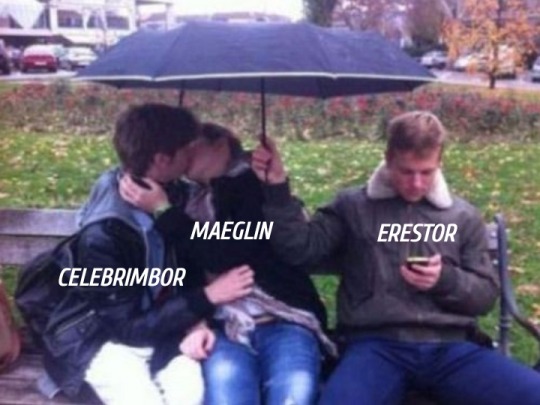

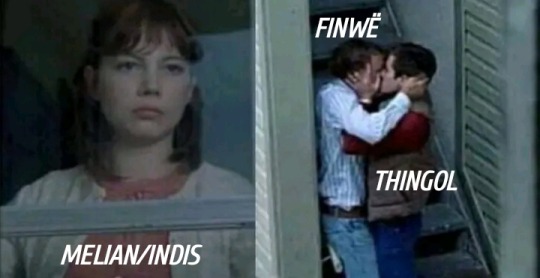

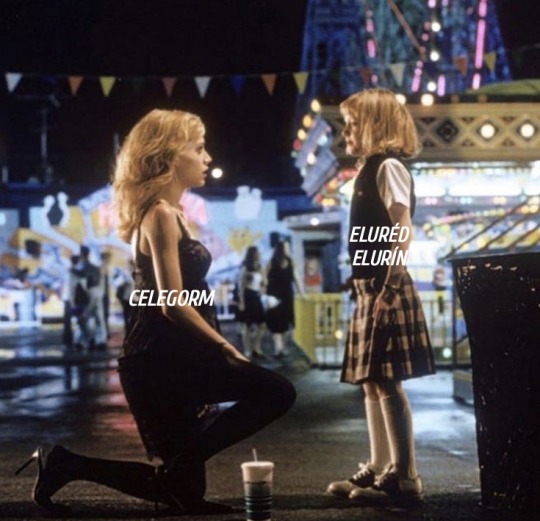
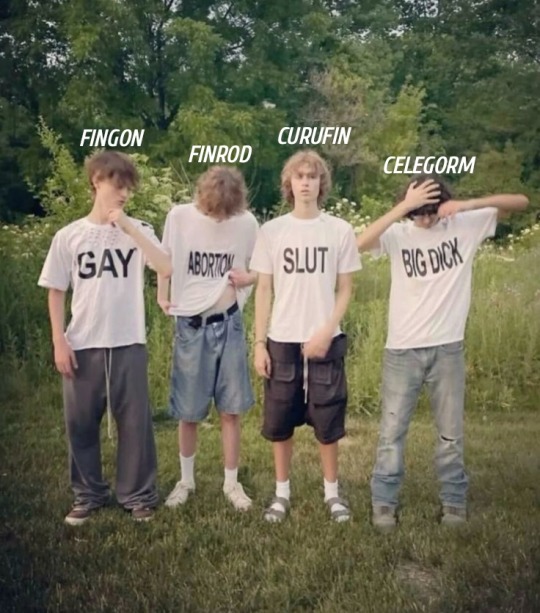
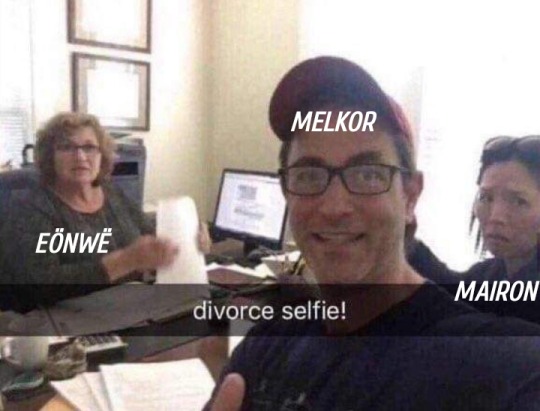



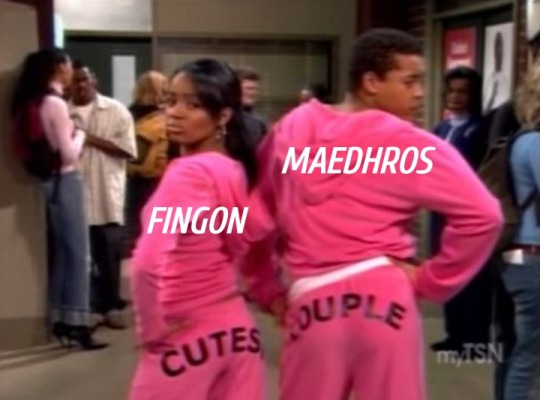

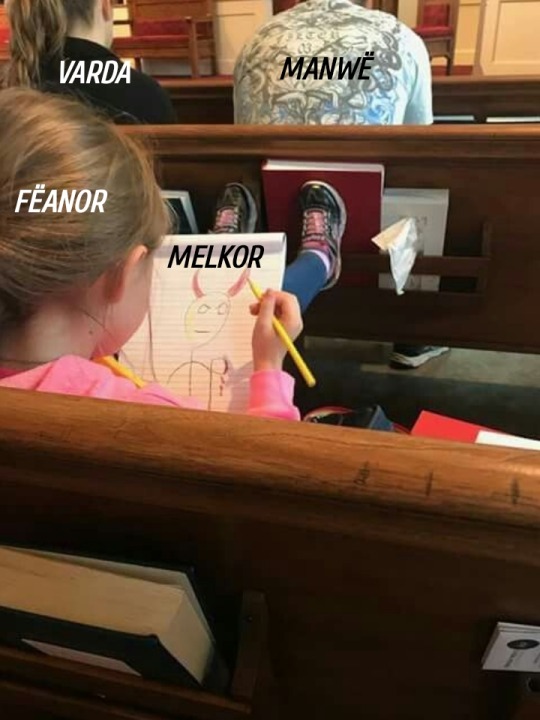



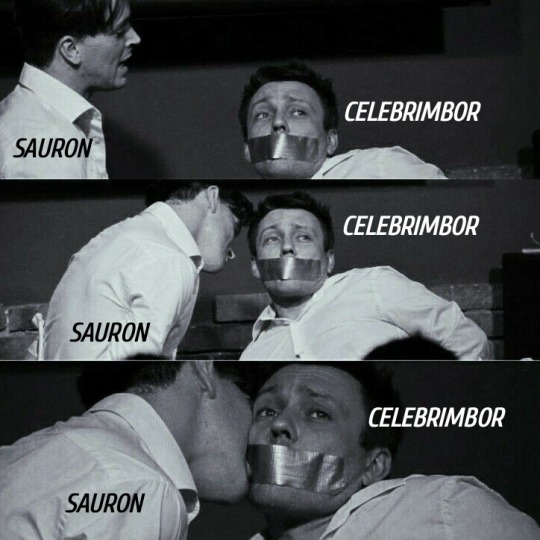
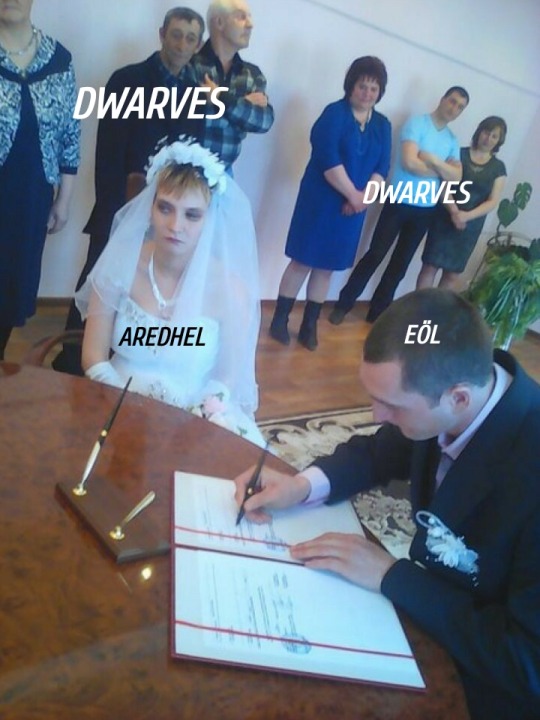
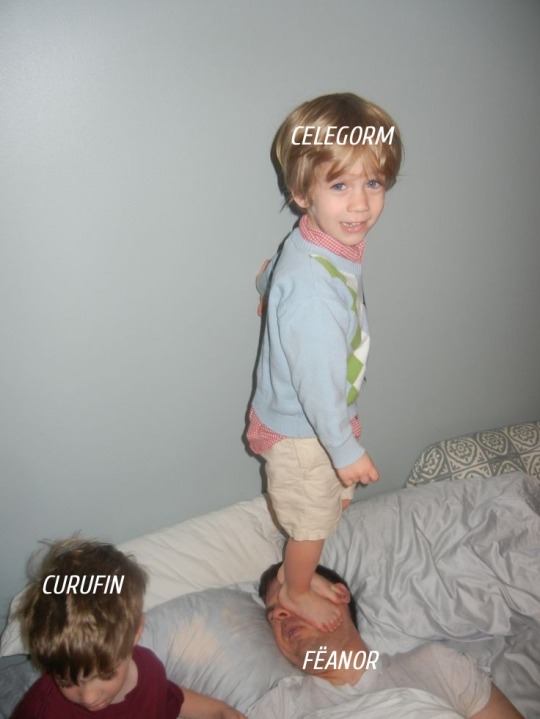

#the silm fandom#the silmarillion#feanorians#house of feanor#house of fingolfin#house of finarfin#finweans#russingon#turgon x caranthir#amras/angrod#beleg x turin#Anaire x Nerdanel#Finwe/Thingol#sons of feanor#curufinrod#Aredhel#Eol#elured and elurin#silmarillion#Celebrimbor x Maeglin#silm crack
70 notes
·
View notes
Text

Ancient Greek Turleg
143 notes
·
View notes
Text
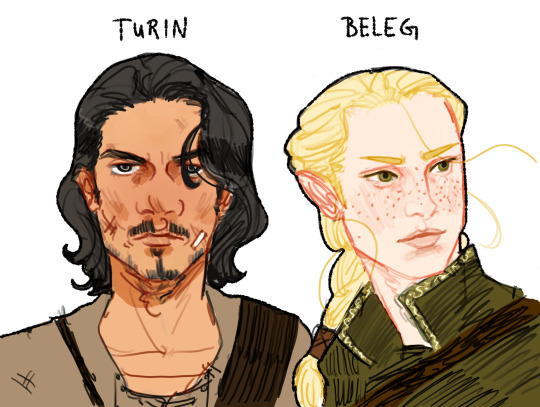
446 notes
·
View notes
Text
Orodreth: So how is Thingol handling being an empty-nester?
Beleg: This is Turin, his new mortal son. We're working on getting mom and sister too.
Orodreth: Gotcha.
#Morwen: Can you please look after Turin just for a bit I can pay--#Thingol: MY NEW SON COME SIT NEXT TO ME#listen listen I KNOW his biggest errors were wrt his daughter#but I believe he did genuinely enjoy parenthood#and it was never in doubt that he ADORED Luthien#which is to say he absolutely took an active role in Turin's childhood#supervising his tutoring#teaching him about the flora and fauna of Doriath#making sure Turin sat near him at meals so he could report on what he'd been learning#thingol#turin#beleg#orodreth#the silmarillion#tolkien tag#mine#pity Luthien never got to meet her foster-brother#but also imagining her laughing at her dad running out and getting another kid as soon as she's gone
75 notes
·
View notes
Note
Hi omg I love this thank you for doing it! I have seen a lot about what named sword did or didn't or might have belonged to whom - do we actually know the names of any First Age swords and who wielded them? (other than Eol's cursed pair).
Thank you!
[Anon, this one got so long that I have divided it into 3 parts so people can navigate more easily to weapons that most interest them. Thanks so much for sending this ask, I went down many rabbit holes researching and learned some new things myself.]
The Iron Gang: Anglachel-Gurthang, Anguirel, Angrist
Swords of the First Age, Part 1 of 3
Anglachel
Meaning: Uncertain. Possibly a combination of ang “iron”, lach “flame” and êl “star” (Eldamo). Sindarin.
Maker: Eöl
Owned/wielded by: Eöl, Thingol, Beleg, (Gwindor), Túrin
Notable for: forged from meteoritic iron; given as fee to Thingol for leave to dwell in Nan Elmoth; slaying Beleg
Fate: Reforged in Nargothrond as Gurthang
Then Beleg chose Anglachel; and that was a sword of great worth, and it was so named because it was made of iron that fell from heaven as a blazing star; it would cleave all earth-delved iron. One other sword only in Middle-earth was like to it. That sword does not enter into this tale, though it was made of the same ore by the same smith; and that smith was Eöl the Dark Elf, who took Aredhel Turgon’s sister to wife. He gave Anglachel to Thingol as fee, which he begrudged, for leave to dwell in Nan Elmoth; but its mate Anguirel he kept, until it was stolen from him by Maeglin, his son.
The Silmarillion, ‘Of Túrin Turambar’
Discussion
Anglachel and its mate Anguirel are remarkable weapons. Not only because they were forged from “star iron”, against which the mere iron ores of Earth were no match, but also — certainly in the case of Anglachel and probably likewise with Anguirel — they seem to have possessed a sort of dark power, even sentience.
When Thingol gives Anglachel to Beleg, Melian says:
‘There is malice in this sword. The dark heart of the smith still dwells in it. It will not love the hand it serves; neither will it abide with you long.’
Melian’s words, as usual, prove prescient: Anglachel goes on to be the instrument of Beleg’s demise, wielded against him by Túrin as Beleg attempts to cut the fetters holding his friend captive. Gwindor then briefly carries Anglachel, until he and Túrin come to the Pool of Ivrin and Túrin is released of the madness of his grief over Beleg. Túrin notes that the blade has blackened and become blunt, and Gwindor remarks:
‘This is a strange blade, and unlike any that I have seen in Middle-earth. It mourns for Beleg even as you do.’
The Children of Húrin, Chapter 9: Death of Beleg
The implication seems to be that Anglachel has weathered unnaturally after losing its master.
Presumably because of this damage, Anglachel is reforged in Nargothrond. We do not know who specifically reforged the swords, but it is popular fanon that Celebrimbor, who remained in Nargothrond following his father’s expulsion, may have been involved. After reforging, Anglachel becomes Gurthang.
Gurthang (Anglachel reforged)
Meaning: Iron of Death. Sindarin.
Maker: Eöl, reforged by smiths of Nargothrond
Owned/wielded by: Túrin
Notable for: slaying Glaurung, Brandir, Túrin
Fate: Broken under Túrin’s body in his suicide. Shards buried with him.
The sword Anglachel was forged anew for him by the cunning smiths of Nargothrond, and though ever black its edges shone with pale fire.
The Silmarillion, ‘Of Túrin Turambar’
Then they lifted up Túrin, and saw that his sword was broken asunder. So passed all that he possessed.
The Children of Húrin, Chapter 13: The Death of Túrin
Discussion
Anglachel’s seeming-sentience is amplified by its reforging as Gurthang. In this incarnation, the weapon frequently flickers and flames as if it houses a fire of its own. Most notably, when Túrin prepares to take his own life, Gurthang speaks:
Then he drew forth his sword, and said: 'Hail Gurthang, iron of death, you alone now remain! But what lord or loyalty do you know, save the hand that wields you? From no blood will you shrink. Will you take Túrin Turambar? Will you slay me swiftly?'
And from the blade rang a cold voice in answer: 'Yes, I will drink your blood, that I may forget the blood of Beleg my master, and the blood of Brandir slain unjustly. I will slay you swiftly.'
Then Túrin set the hilts upon the ground, and cast himself upon the point of Gurthang, and the black blade took his life.
The Children of Húrin, Chapter 13: The Death of Túrin
A Tangent: The Enigma of the Sentient Sword
There is no explanation in the legendarium for why or how Gurthang speaks, but a speaking sword is an enduring feature of Túrin’s story that goes all the way back to the earliest version, Turambar and the Foalókë (c. 1917-19, published in The History of Middle-earth Vol. 2: The Book of Lost Tales Part Two). So why did Gurthang speak, and why was this feature so dear to Tolkien? Well, here’s a passage on the death of the hero of the Tale of Kullervo in the Kalevala, a Finnish epic that Tolkien read as a teenager and which was a major inspiration behind the story of Túrin.
Kullervo, Kalervo's offspring,
Grasped the sharpened sword he carried,
Looked upon the sword and turned it,
And he questioned it and asked it,
And he asked the sword's opinion,
If it was disposed to slay him,
To devour his guilty body,
And his evil blood to swallow.
Understood the sword his meaning,
Understood the hero's question,
And it answered him as follows:
"Wherefore at thy heart's desire
Should I not thy flesh devour,
And drink up thy blood so evil?
I who guiltless flesh have eaten,
Drank the blood of those who sinned not?"
Kalevala, Rune XXXVI, translated by W.F. Kirby (1907)
Very familiar, isn’t it? The existence of a talking sword in-universe provides opportunity for all sorts of imaginative explanations, but the influence of Kullervo offers, I think, a compelling Doylist one.
Finally, it’s common to read interpretations where Anglachel and Anguirel exhibit the same properties as Gurthang. But there’s not, to the best of my knowledge, explicit canonical evidence that “speech” was an ability these two swords had from the time of their forging by Eöl. (I was also fascinated to find, during research for this post, that Anglachel and Anguirel were probably not always black. I made a separate post about it.)
Anguirel
Meaning: Uncertain. Possibly a combination of Sindarin ang “iron”, (unattested) uir “fiery” (or Noldorin uir “eternity”), and êl “star” (Eldamo).
Maker: Eöl
Owned/wielded by: Eöl, Maeglin
Fate: Unknown; presumably lost in the fall of Gondolin
Discussion
Compared to Anglachel, we know little of the history of its mate Anguirel, save that it was stolen from Eöl by Maeglin, presumably at the time Maeglin left Nan Elmoth for Gondolin.
Angrist (knife)
Meaning: Iron Cleaver. Sindarin.
Maker: Telchar of Nogrod
Owned/wielded by: Curufin, Beren
Fate: Breaks in Beren’s attempt to cut a second Silmaril from Morgoth’s crown.
Then Beren did Curufin release;
but took his horse and coat of mail,
and took his knife there gleaming pale,
hanging sheathless, wrought of steel.
No flesh could leeches ever heal
that point had pierced; for long ago
the dwarves had made it, singing slow
enchantments, where their hammers fell
in Nogrod, ringing like a bell.
Iron as tender wood it cleft,
and sundered mail like woollen weft.
But other hands its haft now held;
its master lay by mortal felled.
The Lay of Leithian, 3051-3063
Then Lúthien rising forbade the slaying of Curufin; but Beren despoiled him of his gear and weapons, and took his knife, Angrist. That knife was made by Telchar of Nogrod, and hung sheathless by his side; iron it would cleave as if it were green wood.
The Silmarillion, ‘Of Beren and Lúthien’
Discussion
Although of a different maker (and of unknown metallic composition), Angrist has interesting similarities with Anglachel and Anguirel. Besides the initial ang- element, all three blades are noted for an ability to cut through iron, and both Anglachel and Angrist end up “turning against” their masters as a pivotal moment: Angrist by breaking as Beren tries to cut a second Silmaril from Morgoth’s crown, and Anglachel by being the instrument of Beleg's death. As Eöl is also noted to have learned from the Dwarves, some fans have imagined these three blades may have been forged from the same meteoritic iron, or at least to share some of the same “enchantment”.
Note that the quote from Lay of Leithian does not explicitly apply to Angrist, which is a name for Curufin’s knife that Tolkien first used in the 1937 Quenta Silmarillion.
Part 2 | Part 3
#weapons#anglachel#gurthang#anguirel#angrist#the children of hurin#the lay of leithian#kalevala#turin turambar#beleg#eol#maeglin#curufin#anon
129 notes
·
View notes
Text
I ship every canonical Tolkien couple - except Aerin & Brodda, Aredhel & Eöl, and Tar-Míriel & Ar-Pharazôn. Those poor ladies deserved so much better than those pathetic a-holes.
(I also kinda think Melian could’ve done better than Thingol.)
These are the “non-canonical” Tolkien pairings that I ship, since nobody asked.
Frodo x Sam (it’s literally canon, period, forget the “non-canonical” category, it’s right there, it’s real)
Frodo x Sam x Rosie (Sam being shared during that year in Bag End; also all but spelled out)
Bilbo x Thorin (obviously; even in the book, it’s subtextual, but it’s THERE)
Fingon x Maedhros (Beren/Lúthien + Frodo/Sam parallels are no joke; yes yes i know i know they’re first cousins and that should be a dealbreaker, and for a while it was for me, but technically they’re HALF-cousins, they only share one grandparent, and it’s not like they can procreate together, so it’s very different from what it would be if one of them was female, also their story is inherently tragic and I think their being related adds to that)
Túrin x Beleg (also, obviously; i mean Túrin only thought he loved Níniel because he felt some kind of connection with her but misinterpreted it in his desperation to get over Beleg)
Finrod x Bëor (yes, Finrod loved Amarië too, and they definitely got their well-deserved happily ever after when Finrod was re-embodied…BUT look at what Bëor did for Finrod and how Finrod lost Bëor to mortality but then laid down his life for Bëor’s descendant; the angst is just too juicy to ignore)
I do not ship Merry and Pippin at all; not only are they full blooded first cousins, but since Merry is an only child and Pippin only has sisters, they very clearly fill that “brother” role in each other’s lives.
After a lot of thought, I’ve decided that queerplatonic Legolas/Gimli makes the most sense to me. They also fill the “brother” role in each other’s lives since they both have no blood siblings. I understand why many people do ship them romantically/sexually, but the thought of anything sexual between them just doesn’t feel right to me, personally. Even the thought of kisses just doesn’t seem to fit them, IMO; they’re about mutual respect and sharing quality time, rather than anything physical. To me they exemplify “heterosexual life partners” perfectly.
#lotr#jrr tolkien#lotr books#lord of the rings#the silmarillion#the hobbit#tolkien legendarium#lotr ships#samfro#bagginshield#russingon#finrod x beor#turin x beleg#frodo x sam x rosie#frodo baggins#samwise gamgee#bilbo baggins#thorin oakenshield#fingon#maedhros#finrod felagund#beor#turin turambar#beleg cuthalion#rosie cotton#merry and pippin#legolas and gimli
71 notes
·
View notes